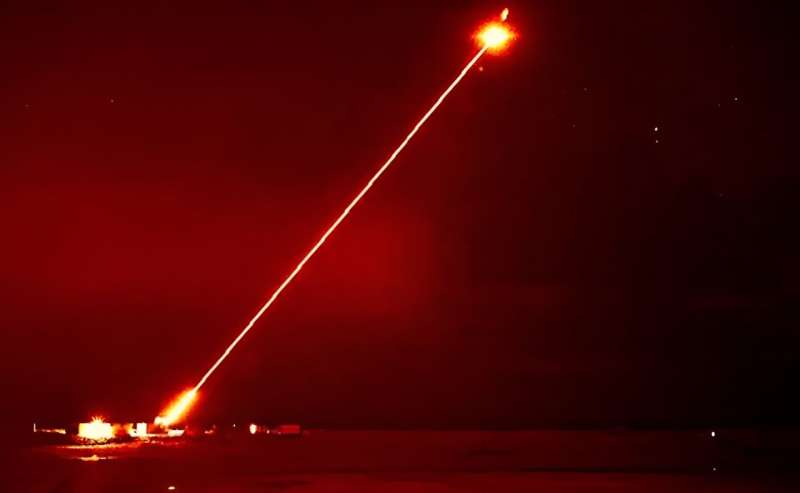
A single burst of light is precisely aimed at a tiny drone flying at breakneck speed far in the distance. Instants later, the deactivated drone crashes into the sea. Not a sound made, no human casualties, no messy explosions. A lethal, multimillion-dollar drone cleanly taken out by a shot that cost less than a good bottle of wine.
If you think this is a scene from a sci-fi movie, think again. Recently, a team of UK scientists and engineers successfully demonstrated that this is viable technology that could find its way on to the battlefield in the next five to 10 years.
DragonFire, a £30 million technology program launched in 2017 and involving the UK government agency Defense Science and Technology Laboratory, missiles manufacturer MBDA, aerospace company Leonardo UK and defense technology company QinetiQ, has passed its first field test by shooting down several drones off the coast of Scotland using laser beams.
Drones are unmanned and semi-automatic aircrafts capable of delivering deadly damage with pinpoint accuracy. They feature heavily on modern battlefields, including the Ukrainian war and the commercial naval routes in the Red Sea.
Shooting them down is not easy and typically involves firing missiles that cost up to £1 million each. While usually effective, defensive systems of this kind are costly and carry a significant risk of causing collateral damage; if a missile misses its target, it will eventually land somewhere and still explode.
However, you don't have to cause a spectacular explosion to deactivate a drone; interfering with its control and navigation systems is more than enough. This is a job that a laser beam can do. Lasers are nothing but particularly bright and directional beams of light—a particular kind of electromagnetic radiation. A sufficiently powerful laser can interfere with any electronic device, causing it to malfunction.
Compared to standard missiles, a high-power laser system has a range of strategic advantages. It is surprisingly cheap to operate. Running DragonFire for ten seconds costs the equivalent of using a heater for an hour (less than £10 per shot).
Lasers are also free from the risk of collateral damage. Even if a laser misses its target, it will keep on propagating upwards and eventually be absorbed and scattered in the atmosphere. A laser is a beam of light, so it only propagates in straight lines, regardless of gravity. Also, they usually cover a small area of the order of a few millimeters—they are akin to a surgical intervention.
Lasers are therefore the defensive weapon par excellence; they can only be used to stop incoming threats, not cause significant harm. Lasers are also far less susceptible to countermeasures. By its very nature of being a beam of light, lasers travel at the fastest possible speed: the speed of light. Once a laser beam is fired, there is nothing else in nature that can catch up with it and neutralize it.
Laser beams have been used on the battlefield for quite some time. They are mainly used for tracking targets, remote sensing and precision aiming. However, this is the first time that this type of technology has proven effective in a disruptive application.
This article is republished from The Conversation under a Creative Commons license. Read the original article.![]()
Citation: Drone-zapping laser weapons now effective (and cheap) reality (2024, January 23) retrieved 23 January 2024 from https://techxplore.com/news/2024-01-drone-zapping-laser-weapons-effective.html
This document is subject to copyright. Apart from any fair dealing for the purpose of private study or research, no part may be reproduced without the written permission. The content is provided for information purposes only.
